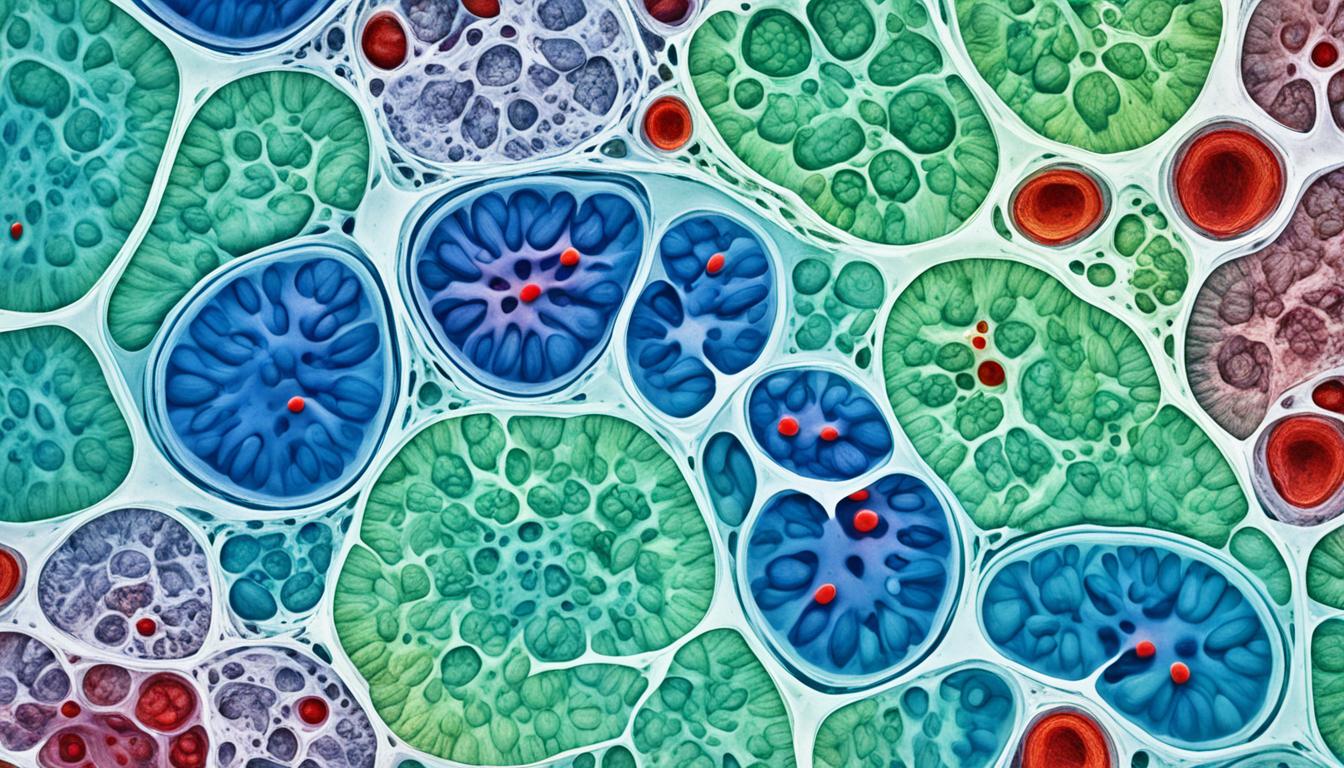A cyst is a fluid-filled sac in the kidneys. Simple and complex kidney cysts are the main types. Simple cysts are usually harmless and show up as you get older. But complex cysts might be linked to genetic diseases like polycystic kidney disease (PKD).
PDK is a genetic condition. It causes many cysts to grow in your kidneys. This makes them larger and not work well. You might feel back or side pain, have headaches, or see blood in your urine. Sometimes, cysts appear in the liver too. Doctors use tests and your family history to diagnose PKD.
PKD doesn’t have a cure yet. But, you can manage symptoms and problems with treatments. These include medicines, lifestyle changes, dialysis, or kidney transplants. Acquired cystic kidney disease (ACKD) is another condition with kidney cysts. It affects people with long-term kidney problems, mainly those on dialysis. ACKD often goes without symptoms and might not need treatment unless there are issues.
Key Takeaways:
- There are different types of kidney cysts, including simple kidney cysts and complex kidney cysts.
- Complex kidney cysts can be associated with polycystic kidney disease (PKD), an inherited disorder.
- Symptoms of cystic kidney disease can include back and side pain, headaches, and blood in the urine.
- Diagnosis of PKD involves imaging tests and considering a person’s family history.
- Treatments for PKD can help manage symptoms and complications.
Stem Cell Therapy for Cyst Kidney Disease
Stem cell therapy is a hopeful solution for many kidney diseases, such as cyst kidney disease. Stem cells can renew themselves and change into other cell types. This makes them very promising for fixing kidney problems and restoring function.
Studies on animals show that different types of stem cells can help in both short-term and long-term kidney diseases. They can replace damaged parts and help the body heal itself. These successes in animals mean it might work well in people too.
A lot of these therapies have moved into human trials. These trials check if stem cell therapy for kidney diseases is safe and useful. They are giving us hope that stem cells could help our kidneys work better and heal.
Preclinical Studies on Stem Cell Therapy for Kidney Disease
Before human trials, many animal studies looked at how stem cell therapy can help kidney diseases. They aim to see if stem cells can fix kidney damage and make it work better.
For example, mesenchymal stem cells have reduced kidney injuries in animals. They did this by lessening swelling, stopping cell death, and helping new tissue grow. Induced pluripotent stem cells (iPSCs) can turn into working kidney cells, potentially being a new way to fix kidneys.
Renal-derived stem cells have also shown they can help fix kidneys. They can turn into kidney cells and rebuild damaged areas. This helps the kidney heal itself.
Clinical Trials of Stem Cell Therapy for Kidney Disease
Human trials are also exploring stem cell therapy for kidney diseases. Patients with various kidney conditions, including cyst kidney disease, have received stem cell treatments.
One clinical trial used mesenchymal stem cells for chronic kidney disease. It found the treatment was safe and some patients got better, improving their lives. Another trial with renal-derived stem cells in acute kidney injury cases improved kidney function and healing, leading to better recovery.
Although these trials are showing good results, more studies are needed. We need to better understand how to use stem cell therapy for kidneys and its effects over time.
| Preclinical Studies | Clinical Trials |
|---|---|
| – Investigate therapeutic effects – Assess the potential of stem cells – Repair renal damage |
– Evaluate safety and efficacy – Improve renal function – Promote structural repair |
| – Mesenchymal stem cells – Induced pluripotent stem cells – Renal-derived stem cells |
– Mesenchymal stem cells – Renal-derived stem cells |
Using stem cell therapy for cyst kidney disease and other kidney problems shows real promise. Regenerating kidney tissues and fixing their structure could significantly improve patient outcomes and their quality of life.
Conclusion
Cyst kidney disease impacts renal function and overall health. It’s important to manage symptoms and complications for a better life. While a cure isn’t available, there are treatments to help with the condition.
Medications and lifestyle changes, along with dialysis or transplants, are common treatments. They help relieve symptoms, slow the disease, and boost kidney function. Talking to a doctor is key to choosing the best treatment for each person.
Stem cell therapy is showing promise for kidney diseases like cyst kidney disease. Studies suggest stem cells can repair kidney damage and improve function. More research is still needed, but it brings hope for better treatments.
Cyst kidney disease is challenging for patients, families, and doctors. Finding ways to manage symptoms and trying new treatments like stem cell therapy is important. These efforts can help increase quality of life for those affected.

